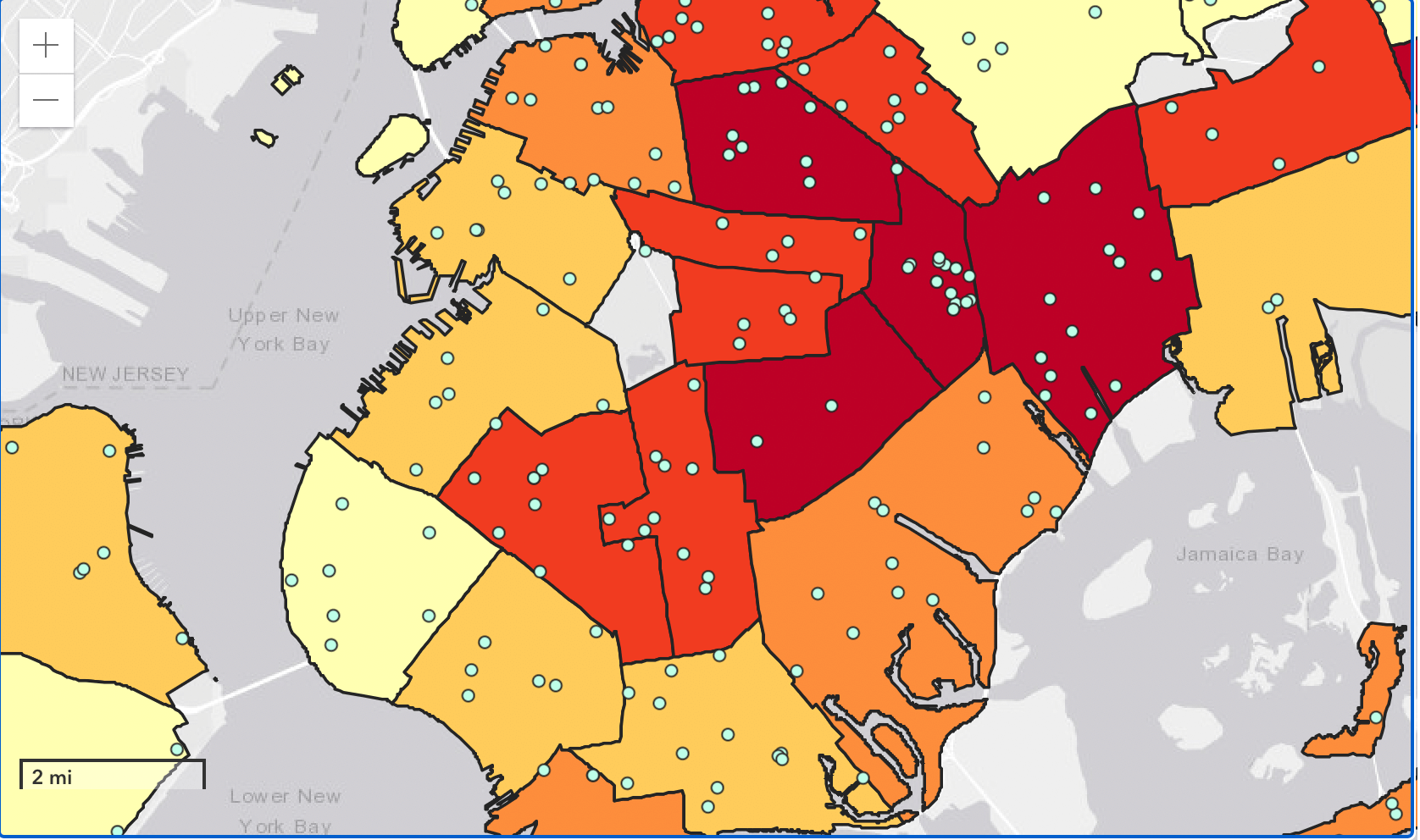East Flatbush Has Just Two Cooling Centers for 162,000 Residents
Large parts of central and east Brooklyn have few places for residents to cool off in a heat wave, a new report from Comptroller Brad Lander found.

A sign on the door of a cooling center in Brooklyn Heights. Photo by Susan De Vries
East Flatbush is the city’s most woefully underserved neighborhood when it comes to cooling centers, having just two of the air conditioned public spaces for its 162,000 residents.
A new report from Comptroller Brad Lander analyzes the availability of the city’s cooling centers, typically set up in libraries, community centers and senior centers, during the July 19-25 heatwave when temperatures soared above 90 degrees.
It also highlights the discrepancies across neighborhoods, comparing the number of centers to residents: In Brooklyn, there were an average of 6.2 cooling centers per 100,000 residents. In Manhattan, that number was 7.1.
East Flatbush, Crown Heights, Prospect Heights, Borough Park, Prospect Lefferts Gardens and Bedford Stuyvesant were amongst the top ten areas with the highest heat vulnerability and lowest number of cooling centers per 100,000 people.
Brownsville was the neighborhood with the highest number of cooling centers, with 17.3 per 100,000 residents. (Nearby Ocean Hill, by comparison, has only cooling center, for seniors only, according to the city’s interactive cooling center map.)

Lander says in the report cooling centers provide a life-saving place for people to cool down from extreme heat. In New York City, 370 people experience heat-related deaths annually, and heat exposure can cause heat strokes, respiratory illness and cardiovascular disease.
Environmental, economic and social factors, such as urban heat islands where there is sparse vegetation and more paved surfaces that retain heat, place some New Yorkers at more risk than others, the report says. According to a map in the report, large parts of central and east Brooklyn have high levels of heat vulnerability.
The report also says that heat mortality rates are twice as high among Black New Yorkers compared to white New Yorkers, “a result of decades of racist housing and economic policies.”
“Historically redlined neighborhoods, where banks applied discriminatory lending practices that segregated Black residents, are well documented to be hotter than historically white neighborhoods, which tend to have greater tree cover and green spaces that reduce urban heat island effects,” the report reads.
According to the Brooklyn Public Library website, there are six locations in Bed Stuy, Ocean Hill, Flatbush and East Flatbush that are currently closed, taking them out of consideration as cooling centers.
Related Stories
- Cooling Centers, Pools Set to Help Brooklynites Cool Off as Heat Wave Continues
- Brooklyn Heights Library Opens in Sleek New Digs at Base of Condo Tower
- From Redlining to Predatory Lending: A Secret Economic History of Brooklyn
Email tips@brownstoner.com with further comments, questions or tips. Follow Brownstoner on Twitter and Instagram, and like us on Facebook.









What's Your Take? Leave a Comment